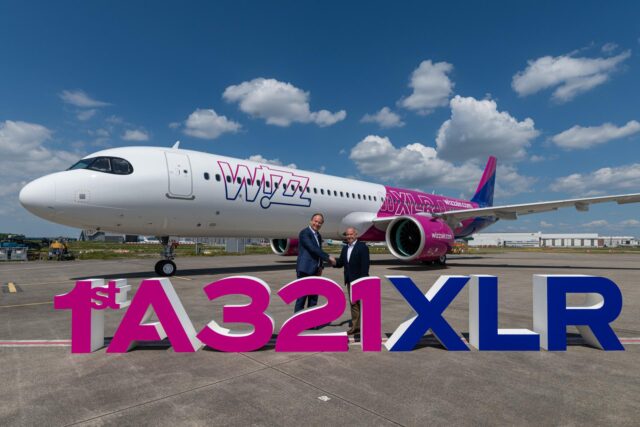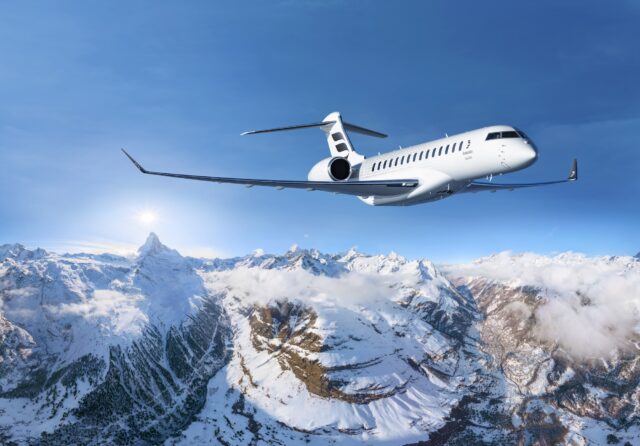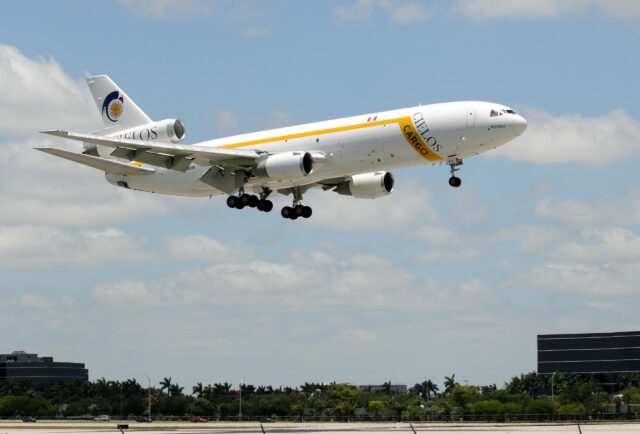GE’s 29,000 lbf F110 engine selected for Shield AI’s runway-independent X-BAT

November 6, 2025
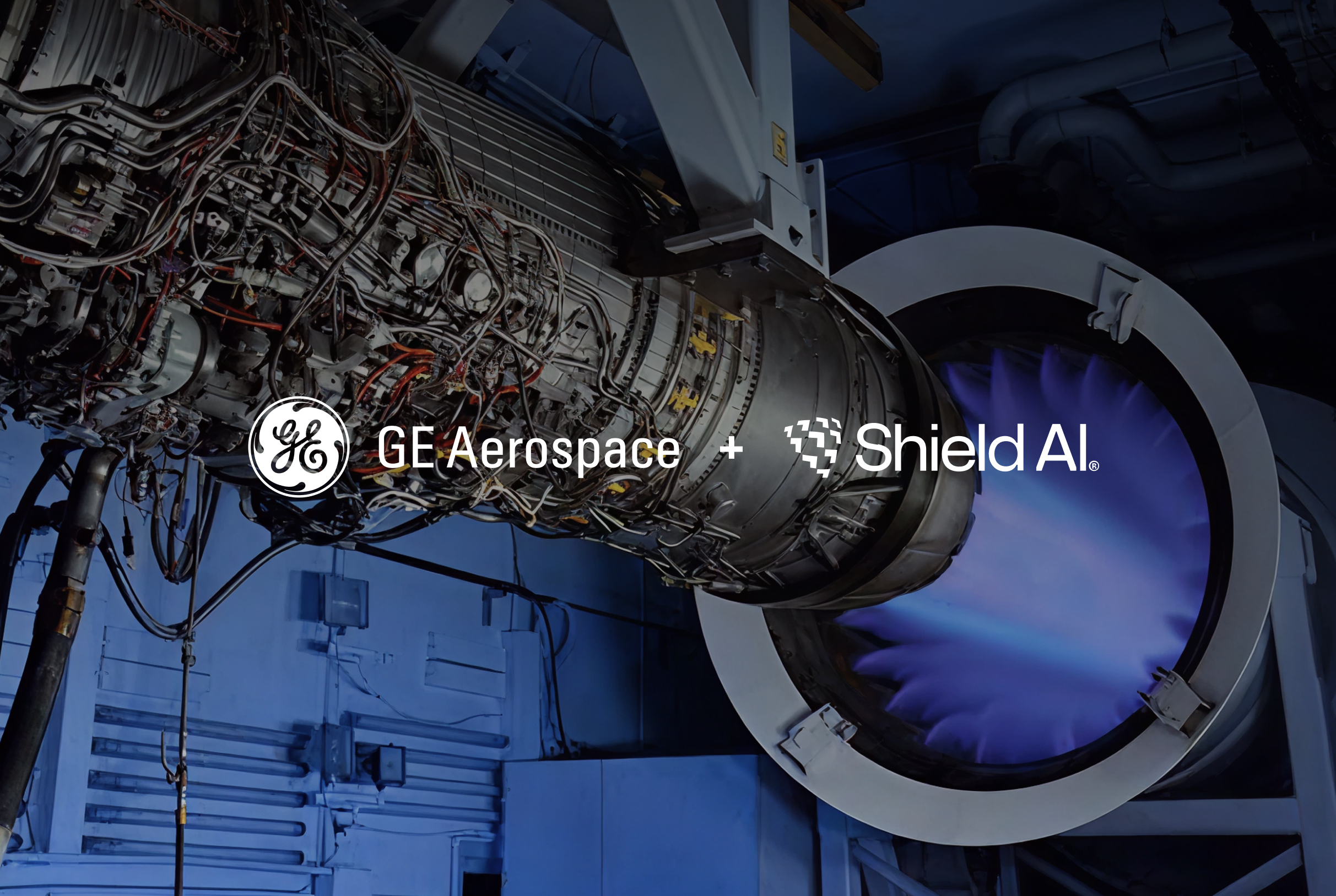
Shield AI is partnering with GE Aerospace to adapt its powerful 29,000 lbf F110 fighter jet engine for its recently unveiled X-BAT autonomous fighter jet. The engine will enable the large drone to take off and land vertically.
GE to develop propulsion for Shield AI’s X-BAT
GE Aerospace and Shield AI announced on Tuesday a Memorandum of Understanding (MOU) to collaborate on developing the propulsion for the X-BAT.

This will centre on GE Aerospace’s F110-GE-129 turbofan featuring the advanced Axisymmetric Vectoring Exhaust Nozzle (AVEN). Shield AI hailed the F100 as one of the most “successful and reliable fighter engines in history.”
The nozzle provides thrust vectoring capability to enable the X-BAT to achieve vertical flight while enhancing manoeuvrability in horizontal flight.
GE Aerospace stated, “We’re excited to pair GE Aerospace’s proven experience in developing and scaling propulsion systems with Shield AI’s vehicle development to move faster from concept to capability.”
Last month, Shield AI unveiled its new X-BAT concept for a vertical take-off and landing (VTOL) ultra-high-end autonomous aircraft that could perform much of the role of manned fighter jets or that of a loyal wingman.
The world’s first AI-piloted VTOL fighter jet.
— Shield AI (@shieldaitech) October 24, 2025
Autonomy for the world. The greatest victory requires no war.#XBAT #Autonomy #Airpower pic.twitter.com/4VGJw5i6ft
While the unveiling of new autonomous aircraft seems to be almost a monthly or weekly occurrence, the X-BAT stands out from the rest. Most autonomous or semi-autonomous systems are sensing platforms, blend the line with a smart cruise missile, or are some sort of loyal wingman drone. But the X-BAT promises to be much more.
X-BAT to get F-16’s & F-15’s fighter jet engine
The F110 series of engines was first run in the 1980s. Notable applications include the F-16 Fighting Falcon, the F-14 Tomcat, F-15E/F-15EX, and even the upcoming Turkish Kaan fighter jet.
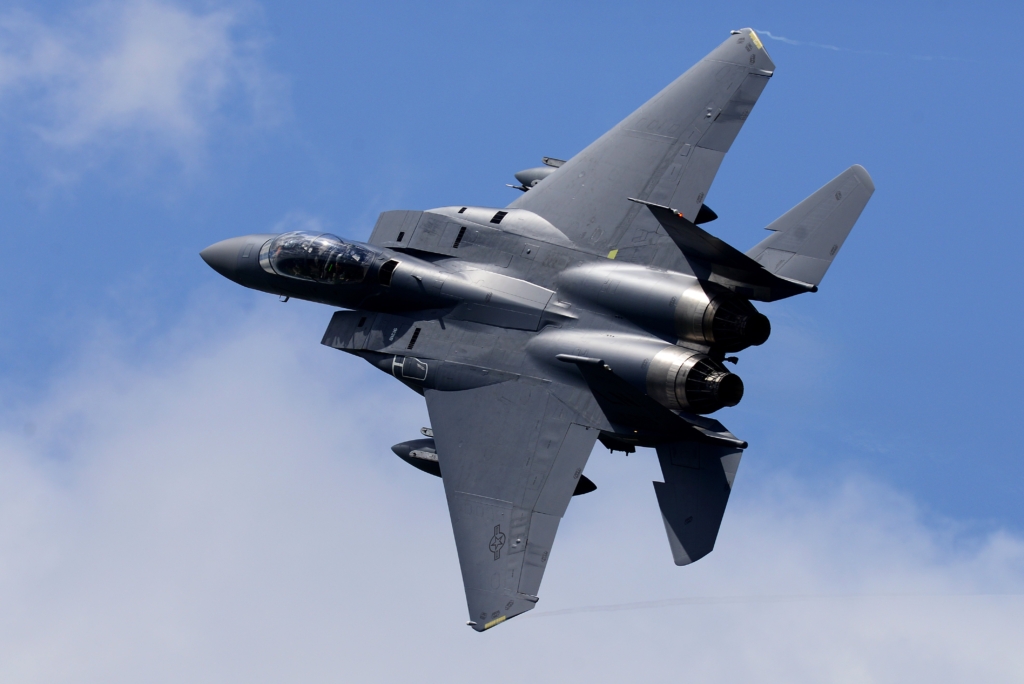
The F-110-GE-129 is an improved variant found on the F-16 Block 50 and 70 and on later variants of the F-15. The F-16 is single-engined, and the F-15 is twin-engined.
The F110 is a two-shaft turbofan engine with an afterburner, in the thrust category of 29,000 lbf, and is in service with 17 nations around the world.
Being powered by the powerful F110-GE-129 underscores the scope and thrust requirements of the X-BAT. For example, the rail-launched Kratos XQ-58 Valkyrie drone is powered by the 2,000 lbf Williams FJ33, while the upcoming Anduril YFQ-44 CCA is powered by a single Williams FJ44-4M with 4,000 lbf.
Shield AI + @GE_Aerospace: X-BAT hauls ass and sips gas.
— Shield AI (@shieldaitech) November 5, 2025
The F110-GE-129 engine, featuring GE’s Axisymmetric Vectoring Exhaust Nozzle (AVEN), has been selected to propel X-BAT, Shield AI’s AI-piloted VTOL fighter jet. With more than 11 million flight hours, the F110 delivers the… pic.twitter.com/CHRWm1erXl
GE Aerospace’s other common fighter jet engine is the GE F404/F414, which powers the F/A-18, F-117 Nighthawk, T-7 Red Hawk, and foreign aircraft such as the Saab JAS 36 Gripen. The latest generation, single-engined Gripen E comes with 22,000 lbf of thrust, which is around 22% more than the older Gripen C/D.
Shield AI’s potentially disruptive X-BAT uncrewed fighter jet
What Shield AI is attempting to accomplish (being runway independent) has been a dream of the US Air Force since it developed the 1950s V/STOL Convair XFY Pogo.

Armor Harris is Shield AI’s Senior Vice President and General Manager, a former employee of SpaceX who had a key role in the development of the vertical landing capability for the Falcon 9 reusable space launch rocket.
The AI-piloted X-BAT is marketed by Shield AI as a VTOL fighter jet able to be completely runway independent and operate in contested and austere environments. It is powered by Shield AI’s Hivemind software.
UK @RoyalNavy Queen Elizabeth-class carriers (aware not pictured) can carry more than 80 @shieldaitech's new X-BAT VTOL autonomous strike jets on the deck, per official at @DefenceIQ Fighter Conference #IFC25. pic.twitter.com/KgzPCPOGZc
— Gareth Jennings (@GarethJennings3) November 5, 2025
Time will tell if Shield AI is able to deliver and make its impressive claims into reality. Notably, Anduril has already developed and combat-tested a vertical launch and landing drone/interceptor munition with its much smaller RoadRunner.
Featured Image: GE Aerospace

